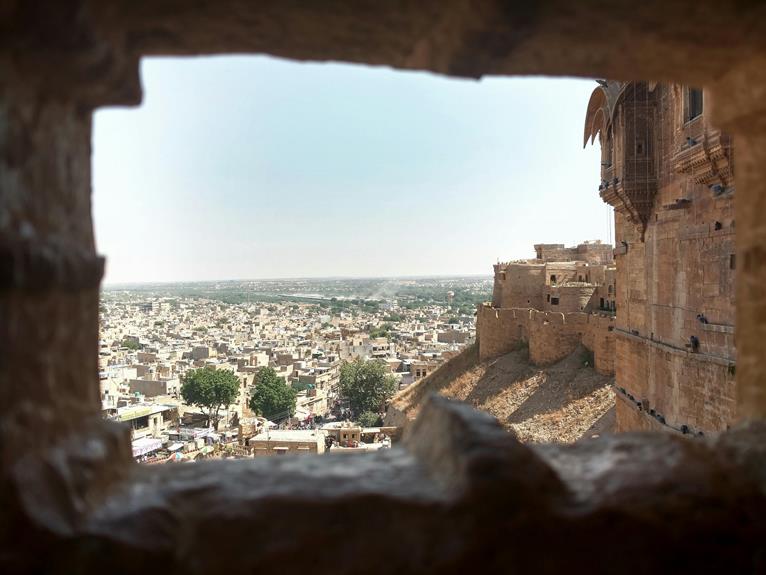Nan Madol, nestled in the tranquil waters of Micronesia, remains a fascinating enigma shrouded in mystery and wonder. The intricate network of basalt stone structures, meticulously crafted without mortar, hints at the advanced architectural prowess of the ancient Saudeleur Dynasty. Delving into the history and purpose behind Nan Madol reveals a rich tapestry of cultural and religious significance, offering a glimpse into the spiritual beliefs and political dynamics of a bygone era. As the sun sets over this UNESCO World Heritage Site, the shadows cast by its towering edifices beckon further exploration into the secrets held within its ancient walls.
Key Takeaways
- Nan Madol is associated with the Saudeleur Dynasty in Micronesia.
- The architecture demonstrates advanced engineering skills and precise construction techniques.
- Cultural significance is reflected in religious practices and ritual ceremonies.
- The dynasty's political influence extended over Pohnpei and surrounding islands.
- Nan Madol is a UNESCO World Heritage Site facing conservation challenges.
Nan Madol's History and Origins
The history and origins of Nan Madol, located in Micronesia and associated with the Saudeleur Dynasty, trace back to the impressive architectural feats of a civilization shrouded in mystery and intrigue. Nan Madol's construction, consisting of a series of interconnected artificial islets built with basalt columns, is a reflection of the advanced engineering skills of its builders. The site's construction remains a subject of fascination and speculation, with theories ranging from the involvement of extraterrestrial beings to the use of levitation.
Ancient legends surrounding Nan Madol add to its enigmatic aura. According to local folklore, the structures were built by twin sorcerers using magic. These legends depict Nan Madol as a place of both great power and great danger, where mystical forces were harnessed for the benefit of the ruling elite. The stories of Nan Madol have been passed down through generations, contributing to the site's mystical reputation.
The origins of Nan Madol are deeply intertwined with the rise of the Saudeleur Dynasty, a powerful ruling family that controlled vast territories across Micronesia. The construction of Nan Madol served not only as a political and religious center but also as a symbol of the Saudeleur's authority and divine connection. Through its architectural grandeur and enigmatic origins, Nan Madol continues to captivate historians, archaeologists, and visitors alike, offering a window into a civilization that defies simple explanations.
Architecture and Engineering Marvels
Demonstrating remarkable precision and ingenuity, Nan Madol's architectural and engineering marvels stand as proof of the advanced capabilities of its ancient builders. The design techniques employed in the construction of Nan Madol are a testament to the sophisticated architectural knowledge possessed by the Saudeleur Dynasty.
The structures within Nan Madol were meticulously built using basalt columns, carefully fitted together without the use of mortar. This intricate construction method showcases the builders' mastery of geometric principles and their ability to create complex patterns and shapes within the architectural design.
Moreover, the structural integrity of Nan Madol is a marvel in itself. The massive stone walls, some reaching up to 25 feet in height and 17 feet in thickness, have withstood the test of time and environmental challenges, remaining largely intact over centuries. The precision in the placement of each stone column, the careful interlocking of the basalt blocks, and the strategic positioning of the buildings within the complex all contribute to the structural stability of Nan Madol.
Cultural Significance and Religious Practices
Within the intricate tapestry of Nan Madol's architectural landscape lies a profound reflection of the cultural significance and religious practices that permeated the society of the Saudeleur Dynasty. The Saudeleur Dynasty's cultural identity was deeply intertwined with their spiritual beliefs and ritual ceremonies, shaping every aspect of their lives.
| Cultural Significance and Religious Practices | ||
|---|---|---|
| Ritual Ceremonies | Spiritual Beliefs | |
| The Saudeleur people conducted elaborate ritual ceremonies | The Saudeleur Dynasty held strong spiritual beliefs | |
| to honor their ancestors and appease the gods. | that revolved around the power of nature and spirits. | |
| These ceremonies often involved chanting, dancing, | They believed in the interconnectedness of all beings, | |
| and offerings of food and precious items. | and their practices were guided by this belief system. |
The architectural layout of Nan Madol, with its religious temples and mortuary structures, served as the physical manifestation of these beliefs. The intricate design and careful placement of these buildings within the complex reflected the Saudeleur's reverence for their spiritual world.
The Saudeleur Dynasty's religious practices were not only a means of honoring their beliefs but also served to unify the community and reinforce social structures. By participating in these rituals, individuals reaffirmed their shared cultural identity and strengthened their bonds with one another.
Saudeleur Dynasty's Political Influence
Saudeleur Dynasty's political authority and governance structures intricately intertwined with their cultural and religious practices, reflecting a holistic system of power and influence within Nan Madol. The Saudeleur Dynasty exercised imperial power over the islands of Pohnpei, establishing dominance through a centralized authority structure that governed various aspects of life within the region. This imperial power was consolidated by the dynasty's ability to control resources, trade routes, and religious ceremonies, solidifying their position as the ruling elite.
The ruling elite of the Saudeleur Dynasty held both political and religious roles, with leaders often assuming divine status to legitimize their authority. The dynasty's political influence extended beyond mere governance, shaping societal norms, economic activities, and even the spiritual beliefs of the people. Through a combination of military prowess, religious symbolism, and strategic alliances, the Saudeleur rulers maintained a grip on power that endured for centuries.
The political influence of the Saudeleur Dynasty was not only felt within the walls of Nan Madol but also reverberated throughout the surrounding islands of Micronesia. Their sophisticated administrative structures, coupled with a complex system of tribute and taxation, enabled the dynasty to exert control over vast territories, further enhancing their imperial power and solidifying their status as a formidable force in the region.
UNESCO World Heritage Site Recognition
The designation of Nan Madol as a UNESCO World Heritage Site underscores its exceptional cultural and historical significance on a global scale. This recognition brings attention to the conservation challenges facing this ancient city built on a series of artificial islands, highlighting the need for sustainable preservation efforts to protect its unique architectural and archaeological features. Nan Madol's UNESCO status also signifies its potential for ecotourism, offering opportunities for responsible tourism that can contribute to the local economy while safeguarding the site's integrity.
Local community involvement plays an essential role in the ongoing management of Nan Madol as a UNESCO World Heritage Site. Collaborating with the residents of nearby communities is vital for ensuring that their traditional knowledge and practices are respected, and that modern-day adaptations in infrastructure and tourism development align with the site's cultural values. Empowering the local community to participate in decision-making processes regarding Nan Madol's preservation can lead to more sustainable outcomes that benefit both the site and those who live in its vicinity.
As Nan Madol continues to be recognized and celebrated as a UNESCO World Heritage Site, it serves as a reminder of the importance of protecting our shared human heritage for future generations. By addressing conservation challenges, exploring ecotourism potential, fostering local community involvement, and adapting to modern-day needs, Nan Madol exemplifies the harmonious coexistence of historical preservation and contemporary relevance.
Visitor Experience and Preservation Efforts
Preservation efforts at Nan Madol in Micronesia are intricately intertwined with enhancing the visitor experience to guarantee sustainable conservation of this UNESCO World Heritage Site. The delicate balance between facilitating access for visitors and preserving the site's integrity poses significant conservation challenges that require careful visitor management strategies.
Visitor management at Nan Madol is important to mitigate the impact of tourism on the ancient structures and surrounding environment. Implementing measures such as visitor quotas, guided tours, and designated pathways help minimize erosion, vandalism, and other potential threats posed by increasing visitation. By controlling the flow of visitors and educating them about the site's cultural and historical significance, conservation efforts can be more effective in safeguarding Nan Madol for future generations.
Preservation efforts also involve ongoing research to better understand the site's vulnerabilities and identify innovative solutions to protect it. Collaborations between local authorities, conservation experts, and the community play a significant role in developing sustainable management plans that prioritize both preservation and visitor experience. By fostering a sense of stewardship among visitors and stakeholders, Nan Madol can continue to inspire awe and admiration while being responsibly preserved for years to come.
Frequently Asked Questions
How Did the Builders Transport the Massive Stones to Nan Madol?
Ancient engineering and technology played pivotal roles in the transportation methods used by builders to move massive stones to their desired locations. Logistics was carefully planned to overcome challenges in moving such heavy materials.
Various techniques, such as leveraging manpower, utilizing sledges, and implementing pulley systems, were likely employed to facilitate the movement of these stones. The remarkable feats of ancient engineering showcased innovative solutions for transporting large stones efficiently.
Are There Any Legends or Myths Associated With Nan Madol?
Legends and myths surrounding ancient structures often hold profound cultural significance, shedding light on origins and beliefs. These narratives can offer insights into mysterious construction techniques, engineering marvels, and the people's connection to their environment.
As research and excavation projects uncover more, conservation efforts become vital to preserving these sites for future generations. Delving into the stories woven around these places reveals a tapestry of human ingenuity and cultural heritage.
What Challenges Did the Saudeleur Dynasty Face During Its Reign?
The Saudeleur Dynasty faced significant challenges during its reign, including political instability and resource scarcity. These issues often led to internal conflicts, power struggles, and the need to manage limited resources efficiently.
As rulers, the Saudeleurs had to navigate these challenges to maintain control, stability, and the support of their subjects. Balancing the demands of governance with the realities of a growing population and finite resources presented ongoing obstacles for the dynasty.
How Has Climate Change Impacted Nan Madol's Preservation Efforts?
Climate change has greatly impacted the preservation efforts of many historical sites worldwide. Erosion, heightened by changing weather patterns, poses a threat to the structural integrity of these sites. Preservation techniques such as reinforcing structures and implementing sustainable land management practices are vital in combatting these effects.
One interesting statistic reveals that over 30% of UNESCO World Heritage sites are at risk due to climate change, highlighting the urgent need for proactive conservation measures.
Are There Any Ongoing Archeological Excavations or Research Projects at Nan Madol?
Numerous ongoing excavations and research projects worldwide focus on sites of cultural significance, employing various construction techniques to uncover historical mysteries. These initiatives explore the past, shedding light on ancient civilizations and their architectural marvels.
Through meticulous study and analysis, researchers aim to reveal hidden narratives and preserve invaluable heritage for future generations. Such endeavors not only contribute to archaeological knowledge but also enhance our understanding of human history and cultural evolution.
Conclusion
To sum up, recent research has put forward a captivating theory regarding the construction of Nan Madol, proposing that the geometric layout of the structures may have had astronomical significance, aligning with celestial events to enhance the spiritual connection of the site.
This fresh perspective adds another layer of complexity to the already awe-inspiring architectural and cultural significance of Nan Madol, shedding light on the advanced knowledge and beliefs of the Saudeleur Dynasty.
Further exploration of this theory could reveal even more mysteries of this ancient marvel.


